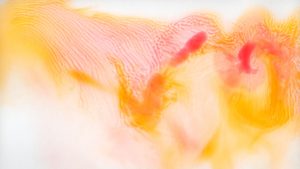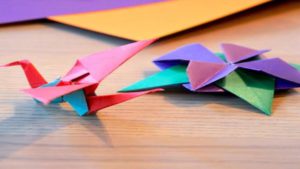Who doesn’t love colours? Since childhood, we’ve all been fond of colours. If we recall, painting with watercolours was first introduced to us in school, and we all know how much we suffered using it. Many a time, it felt frustrating and eventually was given up, but one right technique and everything gets fixed! There are a few mistakes to avoid when painting with watercolours.
History of water colour paintings
Painting with watercolours is the oldest form of painting. Cave painting was discovered in Paleolithic Europe. Water painting was also used in manuscript illustration in European Middle Ages. Its history as an art medium is found in the Renaissance. In the 18th century, William Gilpin wrote books with monochrome illustrations of rivers, valleys, ancient castles and abandoned churches which became famous for tourist journals.
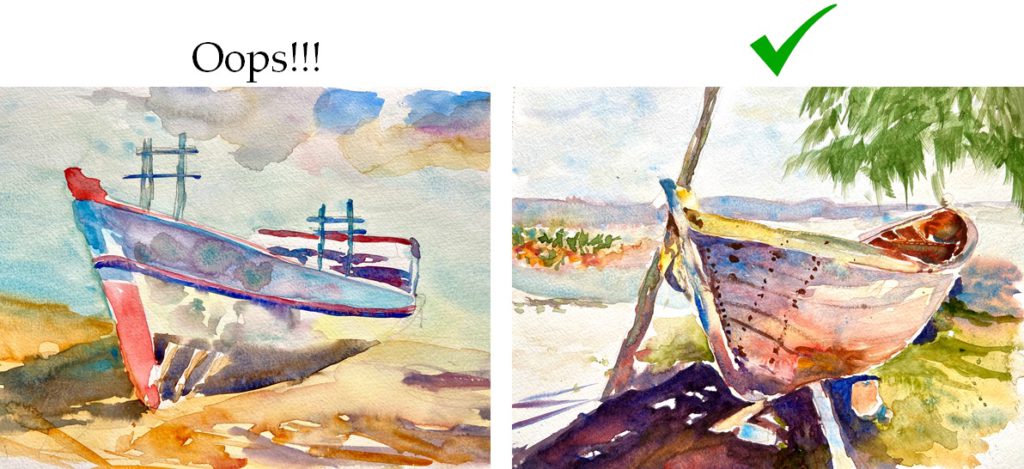
Mistakes to avoid when painting with watercolours
The wrong choice of brush
Not using the right kind of brush for painting can be a problem in getting the desired result. For a good stroke and for thinner or thicker lining, we should choose the brush wisely.
A brush that holds less amount of water can be a problem. While choosing a smaller size brush will cause a problem in covering bigger surfaces of the painting. Therefore, use a small brush for detail work and bigger ones for larger surfaces. A thick brush for good water absorption and thin pointed for bringing the right stroke and making edge.
Colour bleeding
Colour bleeding is one common error that happens when you use water paint. It happens when one previously painted surface isn’t dry, and another layer is to be applied. The colours bleed one into another and cause chaotic work. Though colour bleed is a technique used in painting, a few carelessnesses causes an unnecessary mix of colours that should be noted.
To prevent colour bleeding, all you’ve to do is let the first layer dry and only then apply the next colour.
Colour mudding
Painting on damp colour layers or too dry paper causes colour mudding. It can also occur when two opaque colours are mixed together. Sometimes mixing one warm colour with another cool colour can cause mudding. Using an unclean brush, dirty colours, or an unclean palette too can create a problem.
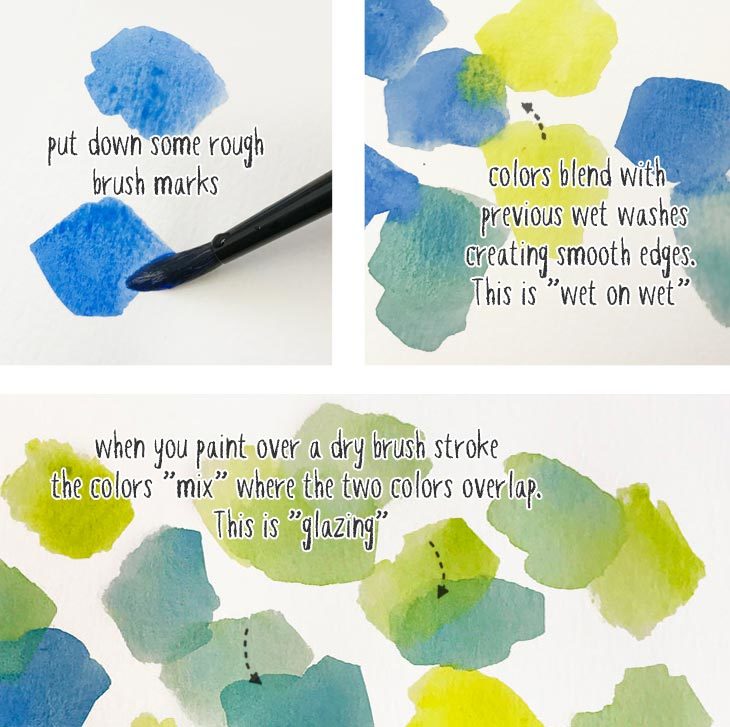
Therefore, you should liquefy the colours and use only clean colours while painting. Let layers dry before adding another layer to prevent colour mudding. Therefore, clean brush and the palette before painting. Use two separate bottles of water, one for cleaning the brush and another for dipping for paint.
Cheap quality of paper while painting with watercolours
Using cheap quality paper can damage the work. When added layers of colours and water get easily curled and torn up using printing paper or any paper of a textbook, when added, layers of colours and water get easily curled and tear up. We should be watchful when choosing paper for painting.
Moreover, use watercolour paper that is made especially for water painting to avoid paper damage after usage of water. It’s durable and smooth for brushes for use. Watercolour paper of weight 100-140 Ibs is recommended for a good result. It’s not necessary to purchase expensive paper.
Inaccurate amount of water when painting with watercolours
It is not using an accurate amount of water when painting with watercolours can get ruined. Too much water can lighten the colour, and the painting would look faded. Using too much water while wetting can damage the paper, and colours can accumulate in one place. This will spoil the fun of water painting.
Apply water evenly on the paper before painting. It should give a glossy effect. Use appropriate water quantity when dipping the brush with paint on paper; else, it can dampen the paper.
Cauliflower effect
When the paint is applied to a semi-dry area, it causes splits of paint, giving it a look of ‘cauliflower’, also known as the cauliflower effect. It’sWhen we are in a rush of painting, we usually can’t wait to use another layer of paint.
To stop the cauliflower effect in your painting, you should either wait to let it dry, or you can also use the hairdryer to save time. You also use edges of tissue paper to soak the excess water with the cauliflower effect.
Dry layers
Painting on dry paper won’t absorb the paint and clot the colour in one place. Too many dry layers won’t work well with each other. Taking too long on one layer can dry up the layer, and colours won’t mix well for a good effect.
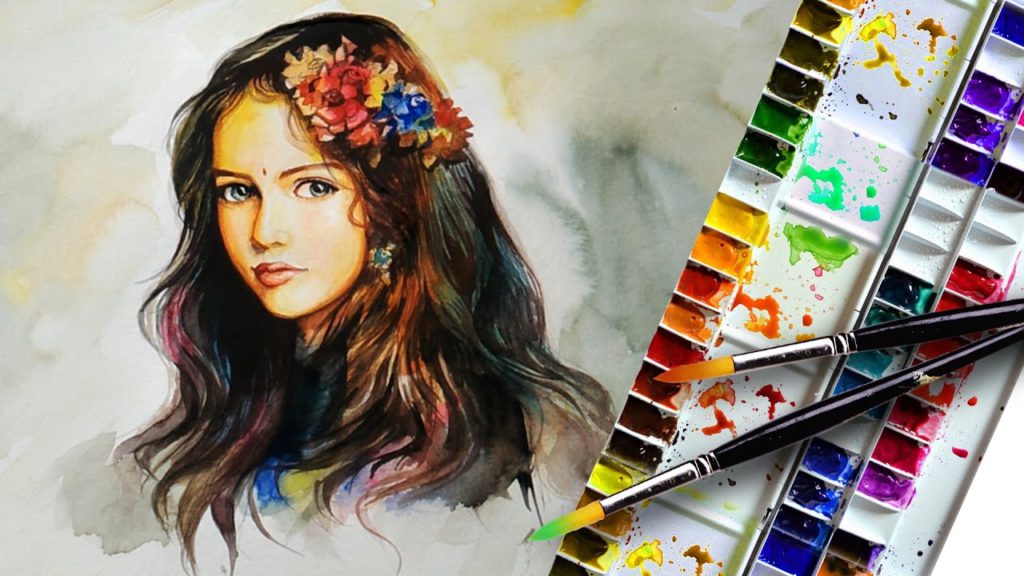
The paper should have evenly spread water on it, giving it a look of a shining surface. The wet paper absorbs paint well and helps it spread evenly. A process on the wet layer soon after the colour is applied for a better result in painting.
Overworking layers while painting with watercolours
When you spend too much time for final touchup overworking layers of paint, you lose the shine of the fresh work, and few colours may fade. One wrong turn of the brush while overdoing can ruin the whole hard work. Brushing layers above layers can dim the brightness and luminosity of the painting.
Stop overworking the colours at the last moment. Don’t run behind one last perfect touchup. Give rest to the painting, let it dry and see the shine the colours have and the freshness it carries.
Outlining natural objects
We usually outline everything we paint to give it a clear look. Outlining the natural objects can make them look so unnatural. Beginners are taught to outline the objects with black colour to give them a definite shape. But the same doesn’t apply to natural objects. You can blend soft colours with hard colours and give the painting depth, and there won’t be any need for an outline.
Conclusion
Watercolour painting is all fun to use, and try your creative skill until you learn about a few mistakes that should be avoided. That’s how you can enjoy working with the paint and have an awesome result.
Share with your friends
